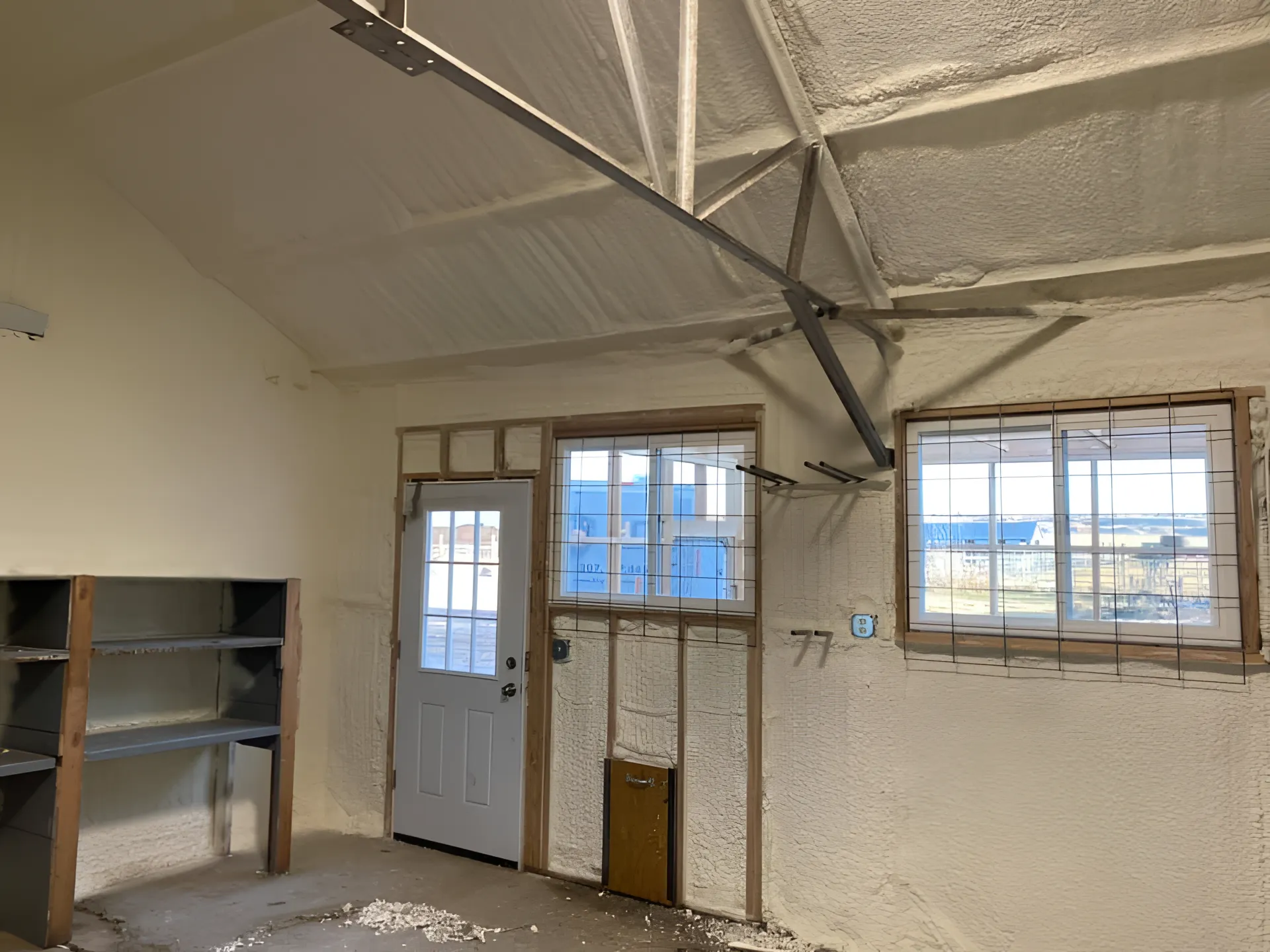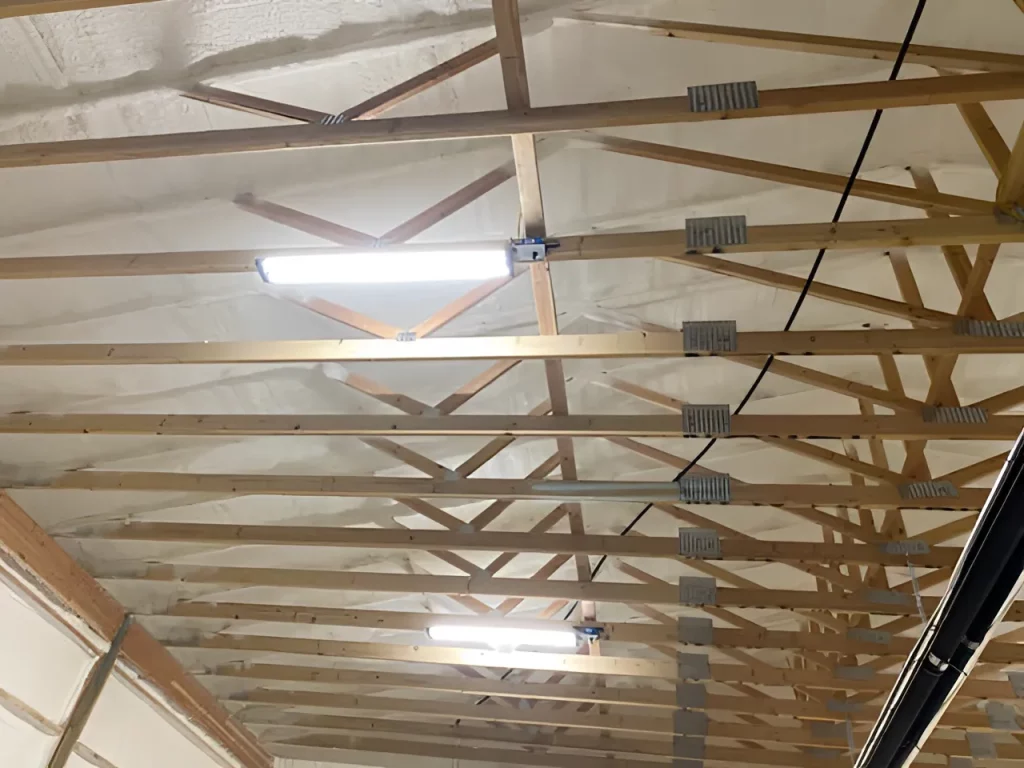
Yes, spray foam insulation is an extremely effective way to block pests from entering a building. Unlike traditional insulation, which pests can easily tear apart or tunnel through, spray foam creates a solid and continuous barrier. When professionally applied, it expands to fill every crack, gap, and crevice, creating an airtight and water-resistant seal that physically blocks rodents, insects, and other unwanted intruders from finding a way inside.
Since pests can cause significant damage and pose health risks, prevention is a top priority for any property owner. To help, this article explains how they get in, why some insulation types fail, and how spray foam offers a durable, long-term solution. The information here is drawn from years of hands-on experience in building science, offering a practical look at protecting your property from the ground up.
Pests don’t need much space to invade your home. A mouse can squeeze through a hole the size of a dime, and many insects need only a paper-thin crack. They typically find their way in through small, overlooked openings in a building’s exterior.
Common vulnerabilities include:
According to the National Pest Management Association, sealing these types of cracks and holes is a fundamental step in any pest-proofing plan. Pests are drawn to shelter and food, and once they find a reliable entry point, an infestation can begin.
Many people assume any insulation will deter pests, but that’s often not the case. Materials like fiberglass batts and blown-in cellulose offer very little resistance. Pests don’t eat these materials for nutrition, but they find them ideal for other purposes.
Rodents, for example, will happily tear apart fiberglass batts to create warm, comfortable nests. They can tunnel through loose-fill cellulose with almost no effort. Because these materials do not air-seal the cavities they fill, pests can still feel air currents from inside the home, which signals a potential entry route. This leaves your home insulated but still completely vulnerable to invasion.
Bonus Tip: If you have an attic or crawl space with older insulation, look for droppings, tunnel paths, or compressed, dirty areas. These are clear signs that pests have been using the material for nesting and shelter.
Spray Polyurethane Foam (SPF) works differently from other insulation types. It’s applied as a liquid that expands and hardens into a solid mass. This process allows it to conform perfectly to any shape, sealing gaps that other materials can’t. Closed-cell spray foam is particularly effective because it becomes very dense and rigid upon curing.
This dense structure is difficult for pests to chew through. Unlike fiberglass, which can be pulled apart, closed-cell foam is a formidable physical barrier. It adheres directly to the substrate, leaving no space for pests to slip by. By eliminating air leaks, it also removes the air currents that pests follow to find their way inside. A report from the U.S. Department of Energy highlights how air-sealing materials like spray foam are key to creating a tightly sealed building envelope, which brings benefits for both energy efficiency and pest prevention.

| Feature | Spray Foam Insulation (Closed-Cell) | Traditional Insulation (Fiberglass/Cellulose) |
|---|---|---|
| Air Sealing | Excellent. Creates a complete air barrier. | Poor. Does not stop air movement. |
| Physical Structure | Rigid, dense, and solid. | Soft, fibrous, and easy to tear or tunnel. |
| Pest Resistance | High. Physically blocks entry and is difficult to chew. | Low. Easily damaged and used for nesting. |
| Vulnerability | Adheres directly, leaving no gaps. | Gaps often exist around edges and penetrations. |
To effectively block pests, spray foam should be applied strategically to the most common entry zones. Sealing these areas creates a continuous defense around the lower and upper levels of the structure.
The rim joist is the wooden box that sits atop the foundation wall. Gaps and cracks in this area are like an open door for pests moving from the ground into the walls. Applying a few inches of closed-cell spray foam here seals these openings completely, establishing one of the most important pest barriers in a home.
Crawl spaces are a major source of pest infestations. Sealing the crawl space walls and rim joists with spray foam can isolate the entire area from the ground and outside air. In attics, applying spray foam to the roof deck can prevent pests from entering through soffit vents or roof intersections. This is particularly crucial since rodent infestations can cause extensive damage. In fact, information from the University of California Integrated Pest Management Program indicates that rodents cause significant economic damage annually through contamination of food and structural harm.
Anywhere a pipe, wire, or vent passes through an exterior wall is a potential weak point. Applying spray foam around these penetrations ensures a tight, permanent seal that pests cannot exploit.
Bonus Tip: Before any insulation work begins, it’s a good idea to have a thorough inspection. A professional can identify hidden air leaks and potential pest entry points that you might not see, ensuring the application is comprehensive.
Spray foam is a powerful tool, but there are a few things to keep in mind before you commit to an installation.
Sealing entry points is the most effective and permanent way to keep pests out of your property. While traditional insulation serves a thermal purpose, it does little to stop intruders. Spray foam, on the other hand, provides both exceptional insulation and a formidable physical barrier, addressing two problems with a single application. By investing in a properly sealed building envelope, you create a cleaner, more energy-efficient, and pest-free environment.
Understanding your property’s specific vulnerabilities is the first step toward a long-term solution. If you’re considering how to best protect your building, the team at High Country Solutions can provide a detailed evaluation. For questions or to schedule a consultation, contact High Country Solutions at [email protected] or call (307) 248-9063 to discuss your project needs and get reliable advice based on proven building science principles.
Closed-cell foam is much denser and more rigid than open-cell foam. This makes it far more difficult for rodents or insects to chew or dig through. Open-cell foam is soft and spongy, offering less physical resistance. For pest control, closed-cell is the superior option.
While spray foam is not a food source for termites, they are capable of tunneling through it to reach wood. However, some spray foam products are treated with a borate-based compound that is toxic to termites and other wood-destroying insects, offering an added layer of protection. More importantly, sealing foundation cracks with foam can block their primary entry routes.
No, spray foam is an inert plastic polymer. Pests are not attracted to it as a food source. Its value in pest control comes from being a physical barrier, not a repellent or poison.
When installed correctly, spray foam helps manage moisture by preventing humid, unconditioned air from entering the building. In some applications, like crawl spaces, it can be part of a system that reduces overall humidity. Proper ventilation planning is part of any professional installation to ensure healthy indoor air quality.